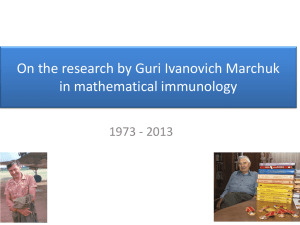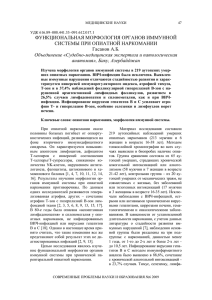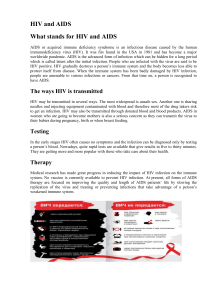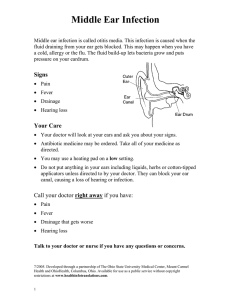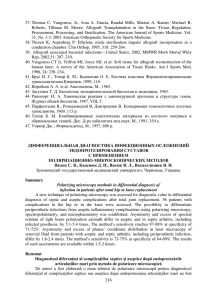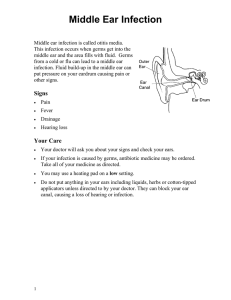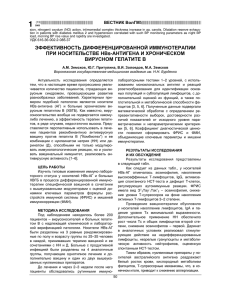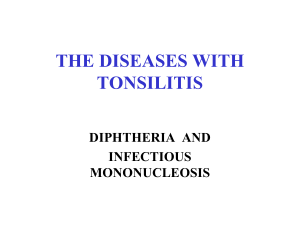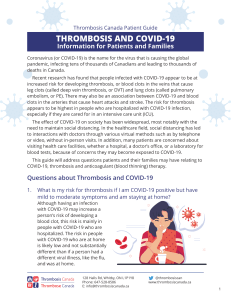Фундаментальные физиологические механизмы в моделях
реклама
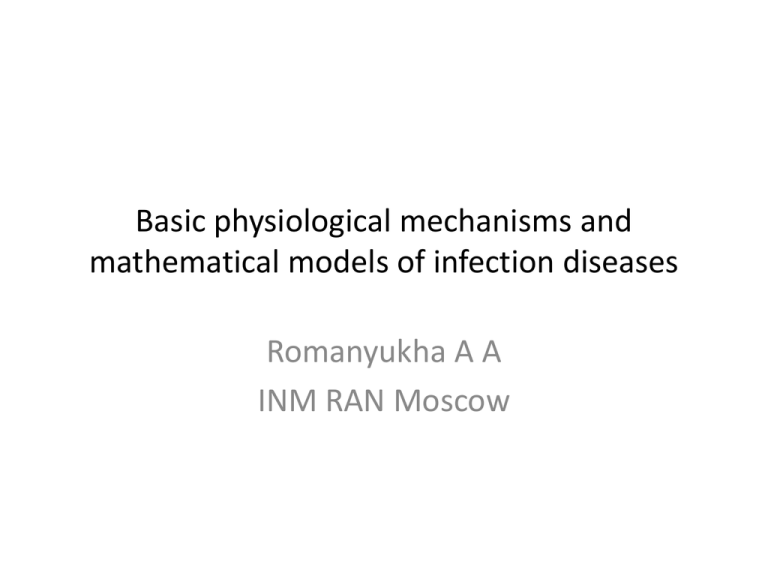
Basic physiological mechanisms and mathematical models of infection diseases Romanyukha A A INM RAN Moscow Main items • Indexes of disease’s dangerous and maintenance of internal environment homeostasis • Models of infection diseases and physiological adaptation Laboratory index (viral hepatitis) • • • • b – bilirubin 1 concentration (sign of liver damage ) B – bilirubin 2 concentration (sign of liver damage ) - reduced bilirubin f – the enzyme concentration in blood (sign of liver cell destruction) • β – concentration in blood the species produced in liver under stress (sign of liver disfunction) b K1 ( p)[1 ( p p0 ) 2 ( f f 0 ) 3 ( 0 )] 4 b B K 2 ( p)[ ] f Laboratory index dynamics during viral hepatitis natural course b 3 2 1 5 10 15 20 t (days) Normalized laboratory index dynamics during viral hepatitis course b 1 5 10 15 20 t (days) Dotted lines stand out trajectories with high rate of favorable disease outcome Index of Inflammation (viral infection) The aim – estimation of defense reaction magnitude and its concordance with clinical state (index) • T – body temperature; H – heart rate; AD – arterial pressure T0 , H0, AD0 – normal values IV = 0.1(T-T0)+0.05(H-H0)+0.6(AD-AD0) • But the index says nothing about mechanism(s) determined unfavorable disease outcomes. From indexes of disease dangerous to models of infection diseases • The design of all indexes based on estimation of deviation from normal state of homeostasis. • But the index says nothing about mechanism(s) determined unfavorable disease outcomes. Basic model of infection disease. Marchuk , 1973 The state of health C if V 0 (means health), then C C , F , m 0. F • To ill or not to ill depends from inequality: • State of health is unstable • State of health is stable if F * then VTo 0. if F * then VTo 0 • That mechanism determined value of C*? Energy cost of immune defense • Е0 – energy cost of immune defense include two components: Е1 – energy cost of immune system maintenance during health and Е2 – energy cost of infection disease itself, then Е0=Е1+Е2 Estimation of energy cost of immune defense • Е1 energy cost of health: cost of immune cells maintenance and renewing – approx – 2 – 2.5 W (permanent, running cost) • Energy cost of diseases : cost of inflammation, immune response, regeneration…. (25 – 150 W during several days of acute disease) multiply on number of diseases. • Assume that in normal organism E1 E2 • Why? Relations between E1 and E2 Immune system adaptation to increase of antigenic load Е2 1 2 B C M2 M1 D Е1 Energy cost of immune defense change with aging Е2 Death Senior weak IS Child Adult normal IS Reproductive period Non-reproductive period strong IS Е1 Characteristic property of model • The design of model permit estimate of defense effectivity (target organ damage, inflammation, homeostasis disturbance….) • This allow to describe immune system adaptation and possible cause of immune suppression. Публикации 1. Romanyukha, A.A., S.G. Rudnev, I.A. Sidorov. 2006. Energy cost of infection burden: An approach to understanding the dynamics of host– pathogen interactions. J Theor. Biology v 241, pp. 1-13 2. 3. 4. Романюха, А.А., Руднев. С.Г. 2001 О применении одного вариационного принципа в задачах исследования противоинфекционного иммунитета на примере математической модели пневмонии. Математическое моделирование, т.13, №8, с.65-84 Marchuk, G. I., & Romanyukha, A. A. (2010). Mathematical modelling and the homeostatic function of the immune system. Russian Journal of Numerical Analysis and Mathematical Modelling, 25(6), 563-580. Романюха АА Иммунная система, норма и адаптация. Иммунология. 2009 №1 стр.7-13
